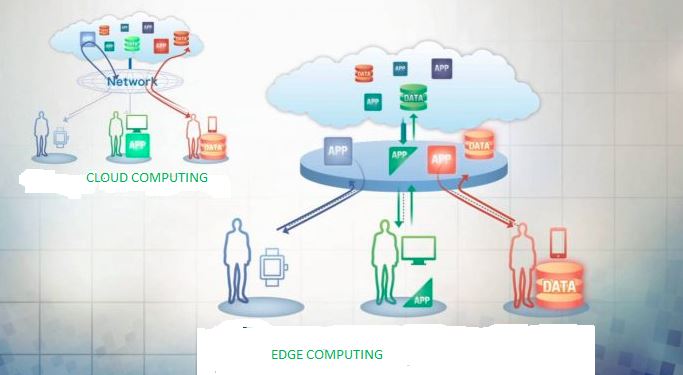Edge Computing
Last Updated :
05 Jan, 2023
Edge Technology aims at making Internet Of Things (IOT) with 100 thousand of sensors in next decade, with the increased usage and manipulation of large data it becomes important to get used to this technology which refers to computing on sensor itself. 2019 is predicted as the year of edge technology and will remain so in the coming years. In a variety of situations, edge computing is deployed. One is when IOT devices is centrally connected to cloud due to poor connectivity of devices. By the year 2020, there will be approximately 1.5 GB worth of data is generated per day. With many devices connected to the internet and generating data, its not possible for cloud alone to handle this huge data all by itself.
Edge can relate to the data processing as well as the local processing of real-time data. The various edge components that can be counted upon are Data processing, Rule Engine, Local Database. Cloud is more concerned with big data processing and data warehousing.  Why Edge Computing?
Why Edge Computing?
- This technology increases the efficient usage of bandwidth by analyzing the data at the edges itself, unlike the cloud which requires the transfer of data from the IOT requiring large bandwidth, making it useful to be used in remote locations with minimum cost.
- It allows smart applications and devices to respond to data almost at the same time which is important in terms of business ad self-driving cars.
- It has the ability to process data without even putting it on a public cloud, this ensures full security.
- Data might get corrupt while on an extended network thus affecting the data reliability for the industries to use.
- Edge computation of data provides a limitation to the use of cloud.
Edge vs Fog Computing: Edge is more specific towards computational processes for edge devices. So, fog includes edge computing, but would also include the network for the processed data to its final destination. Real Life Application Of Edge Technology:
- Autonomous Vehicles – GE Digital partner, Intel, estimates that autonomous cars, with hundreds of on-vehicle sensors, will generate 40 TB of data for every eight hours of driving. Therefore, wheels—edge computing plays a dominant role. Sending all the data to cloud is unsafe and impractical. The car immediately response to the events which has valuable data when coupled into digital twin and performance of other cars of its class.
- Fleet Management – Let’s example considering a trucking company, the main goal is to combine and send data from multiple operational data points like wheels, brakes, batteries, etc to the cloud. Health key operational components are analysed by the cloud. Thus, essentially a fleet management solution encourages the vehicle to lower the cost.
5 Key Benefits Of Edge Computing:
- Faster response time.
- Security and Compliance.
- Cost-effective Solution.
- Reliable Operation With Intermittent Connectivity.
- Reduced latency
Limitation Of Edge Computing:
- Complexity: Setting up and maintaining edge computing systems can be challenging, especially if there are many devices or a vast geographic region involved.
- Limited resources: Edge devices frequently have constrained processing, storage, and bandwidth, which can restrict their capacity to carry out specific activities.
- Dependence on connectivity: In order for edge computing to work correctly, connectivity is required. If the connection is lost, the system may not be able to work.
- Security Concern: Edge devices may be susceptible to security risks such malware, hacking, and physical interference.
Edge Cloud Computing Services:
- IOT (Internet Of Things)
- Gaming
- Health Care
- Smart City
- Intelligent Transportation
- Enterprise Security
Share your thoughts in the comments
Please Login to comment...